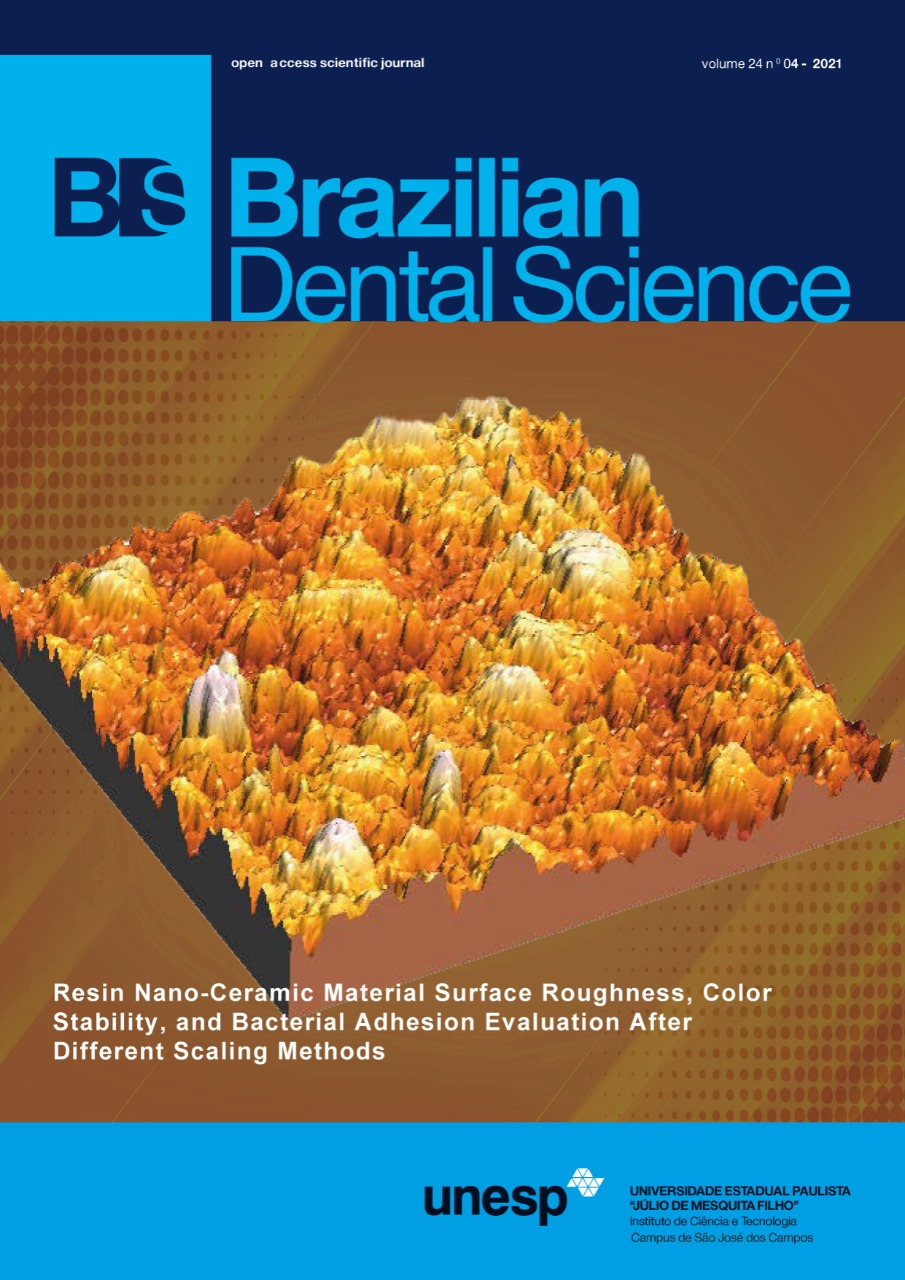Fracture Resistance and Strain Analysis of Zirconia Copings With Vertical Knife Edge and Three Horizontal Finish Line Designs; Chamfer, Deep Chamfer and Shoulder With Two Cementation Techniques
DOI:
https://doi.org/10.14295/bds.2021.v24i4.2529Abstract
Objective: The purpose of this in vitro study is to evaluate the effect of four finish line configurations and two cement types on the fracture resistance of zirconia copings. Material and Methods: Forty yttrium tetragonal zirconia polycrystals copings were manufactured on epoxy resin dies with four preparation designs: knife edge, chamfer, deep chamfer 0.5, 1 mm and shoulder 1 mm. The copings were cemented with two cement types (glass ionomer and resin cement); (n = 5). Two strain gauges were attached on each coping before they were vertically loaded till fracture with a universal testing machine. Data were analyzed by 2-way analysis of variance ANOVA (p < .05). Fractured specimens were examined for mode of failure with digital microscope. Results: Knife edge showed the highest mean fracture resistance (987.04 ± 94.18) followed by Chamfer (883.28 ± 205.42) followed by Shoulder (828.64 ± 227.79) and finally Deep chamfer finish line (767.66 ± 207.09) with no statistically significant difference. Resin cemented copings had higher mean Fracture resistance (911.76 ± 167.95) than glass ionomer cemented copings (821.55 ± 224.24) with no statistically significant difference. Knife edge had the highest strain mean values on the buccal (374.04 ± 195.43) and lingual (235.80 ± 103.46) surface. Shoulder finish line showed the lowest mean strain values on the buccal (127.47 ± 40.32) and lingual (68.35 ± 80.68) with no statistically significant difference. Resin cemented copings had higher buccal (295.05 ± 167.92) and lingual (197.38 ± 99.85) mean strain values than glass ionomer copings (149.14 ± 60.94) and (90.27 ± 55.62) with no statistically significant difference. Conclusion: Vertical knife edge finish line is a promising alternative and either adhesive or conventional cementation can be used with zirconia copings.
KEYWORDS
Cementation; Flexural strength; Prosthodontics; Tooth preparation; Zirconium.
Downloads
Downloads
Published
How to Cite
Issue
Section
License
Brazilian Dental Science uses the Creative Commons (CC-BY 4.0) license, thus preserving the integrity of articles in an open access environment. The journal allows the author to retain publishing rights without restrictions.
=================




























